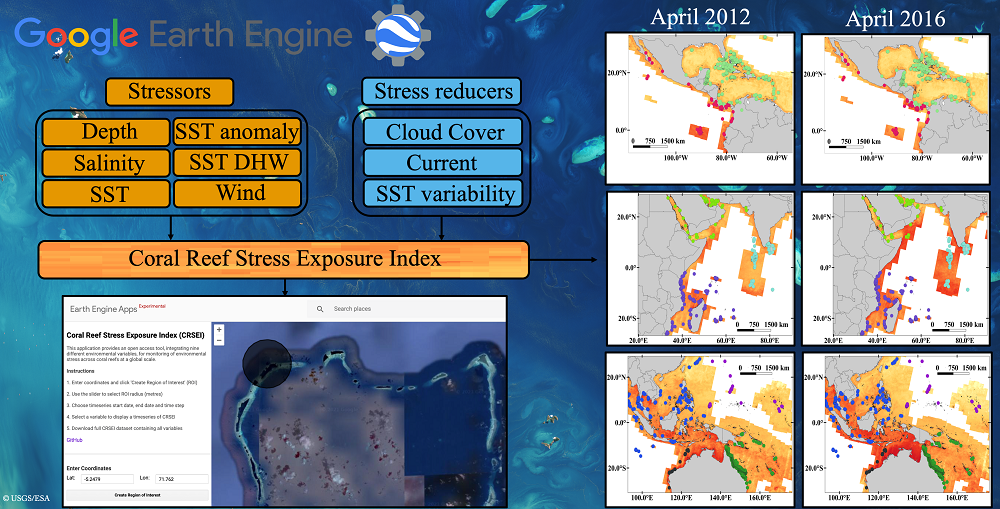Coral reefs are critical ecosystems globally for marine fauna, biodiversity and through the services they provide to humanity. However, they are significantly threatened by anthropogenic stressors, such as climate change. By combining 9 environmental variables and ecological and health-based thresholds obtained from the available literature, we develop, using fuzzy logic (discontinuous functions), a Coral Reef Stress Exposure Index (CRSEI) for remotely monitoring coral reef exposure to environmental stressors. Our approach capitalises on the abundance of readily available satellite Earth Observation (EO) data available in the Google Earth Engine (GEE) cloud-based geospatial processing platform. CRSEI values from 3157 distinct reefs were generated and mapped across 12 important coral reef ecosystem regions. Quantitative analyses indicated that the index detected significant temporal differences in stress and was, therefore, able to capture historic change at a global scale. We also applied the CRSEI to three case-study reef ecosystems, previously well-monitored for stress and disturbance using other methods. PCA analysis indicated that depth, current, sea surface temperature (SST) and SST anomaly accounted for the greatest contribution to the variance in stress in these three regions. The CRSEI corroborated temporal and spatial differences in stress exposure from known disturbances within these reference regions, in addition to identifying the potential drivers of inter- and intra-region differences in stress, namely depth, degree heating weeks and SST anomaly. We discuss how the index can be further improved in future with site-specific thresholds for each stress variable, and the incorporation of additional variables not currently available in GEE. This index provides an open access tool, built around a free and powerful processing platform, that has broad potential to assist in the regular monitoring of our increasingly imperilled coral reef ecosystems, and, in particular, those that are remote or inaccessible.

